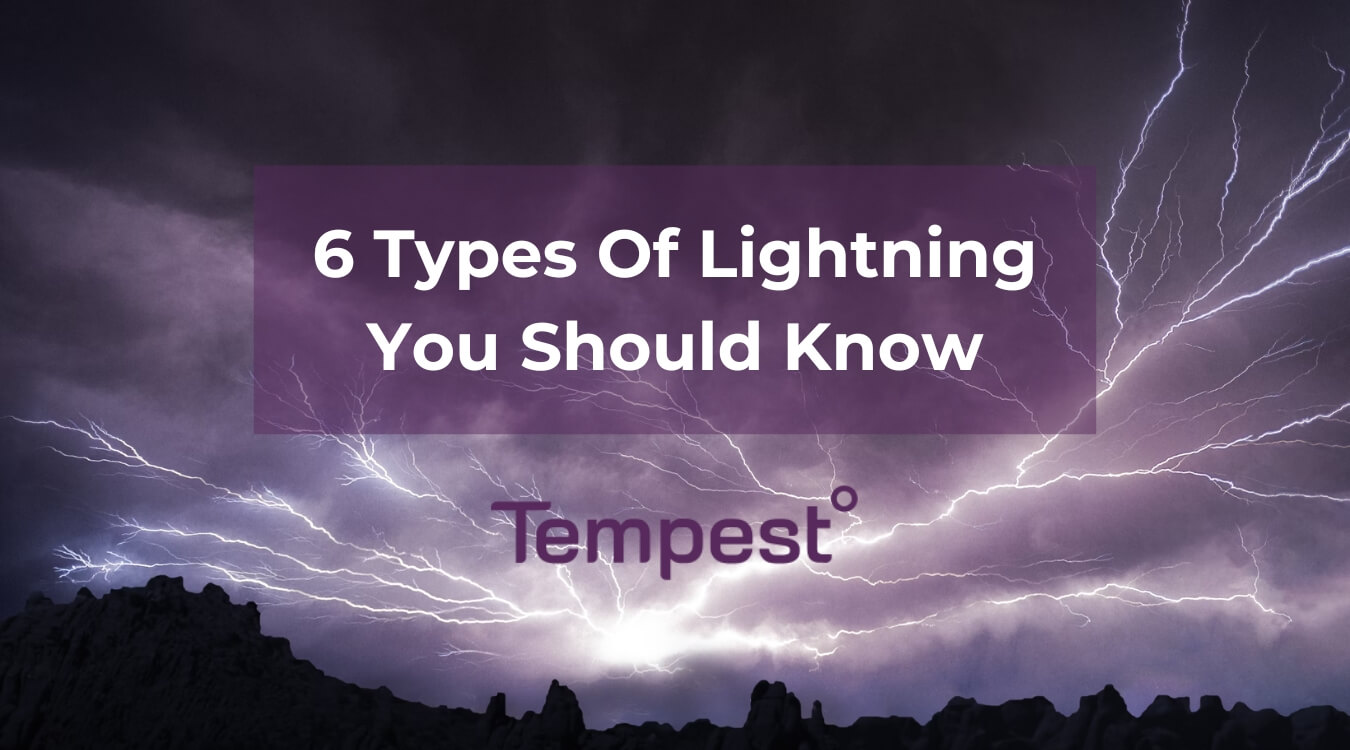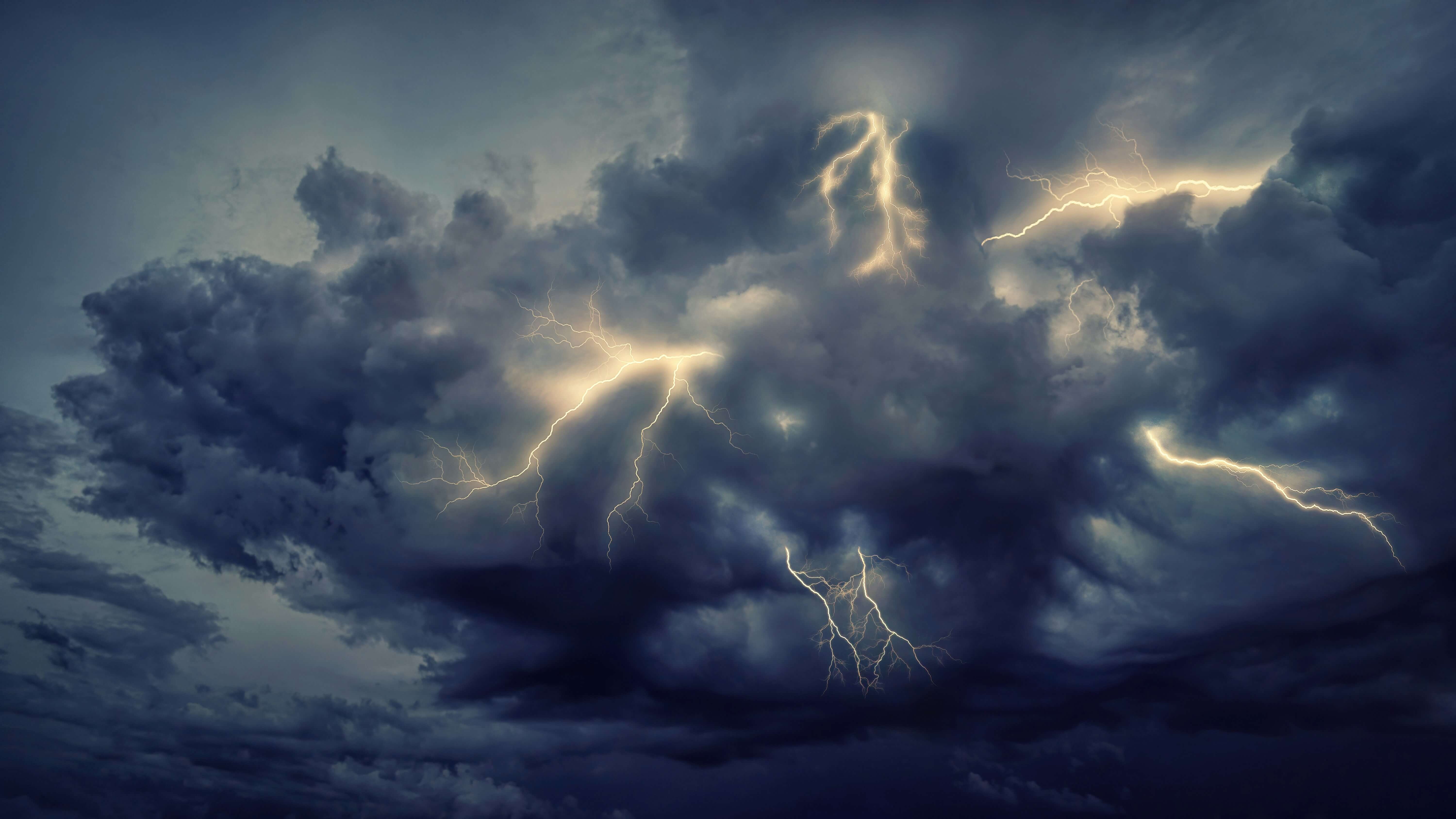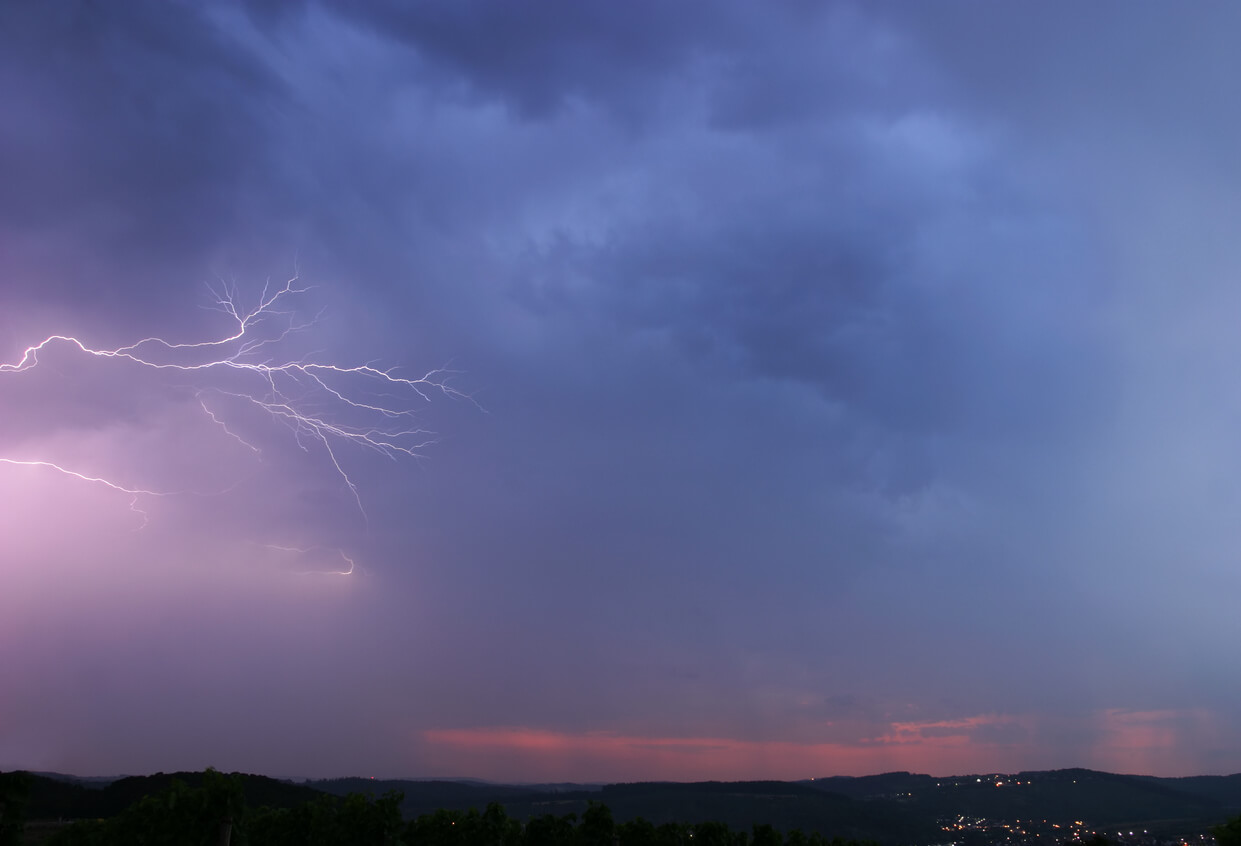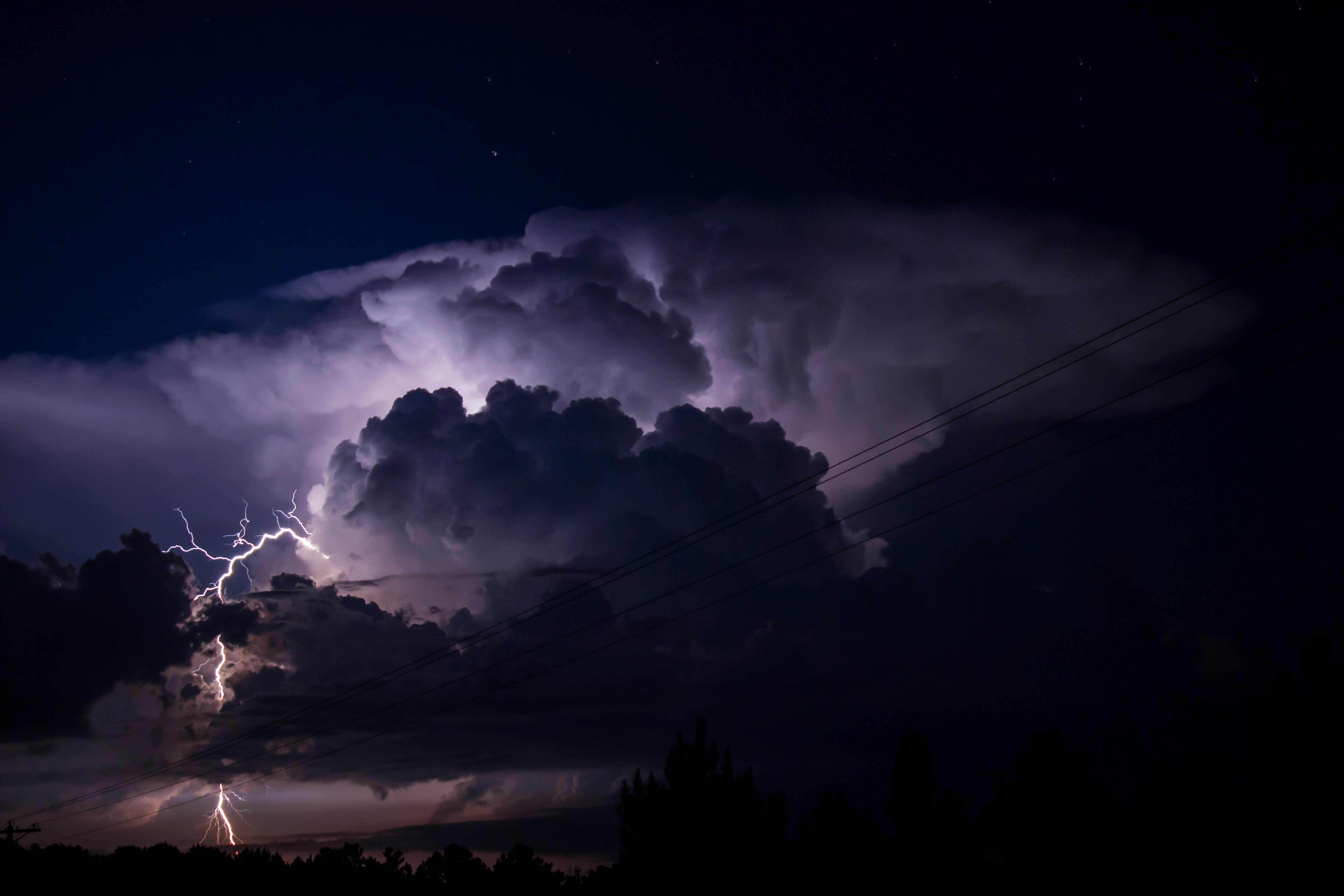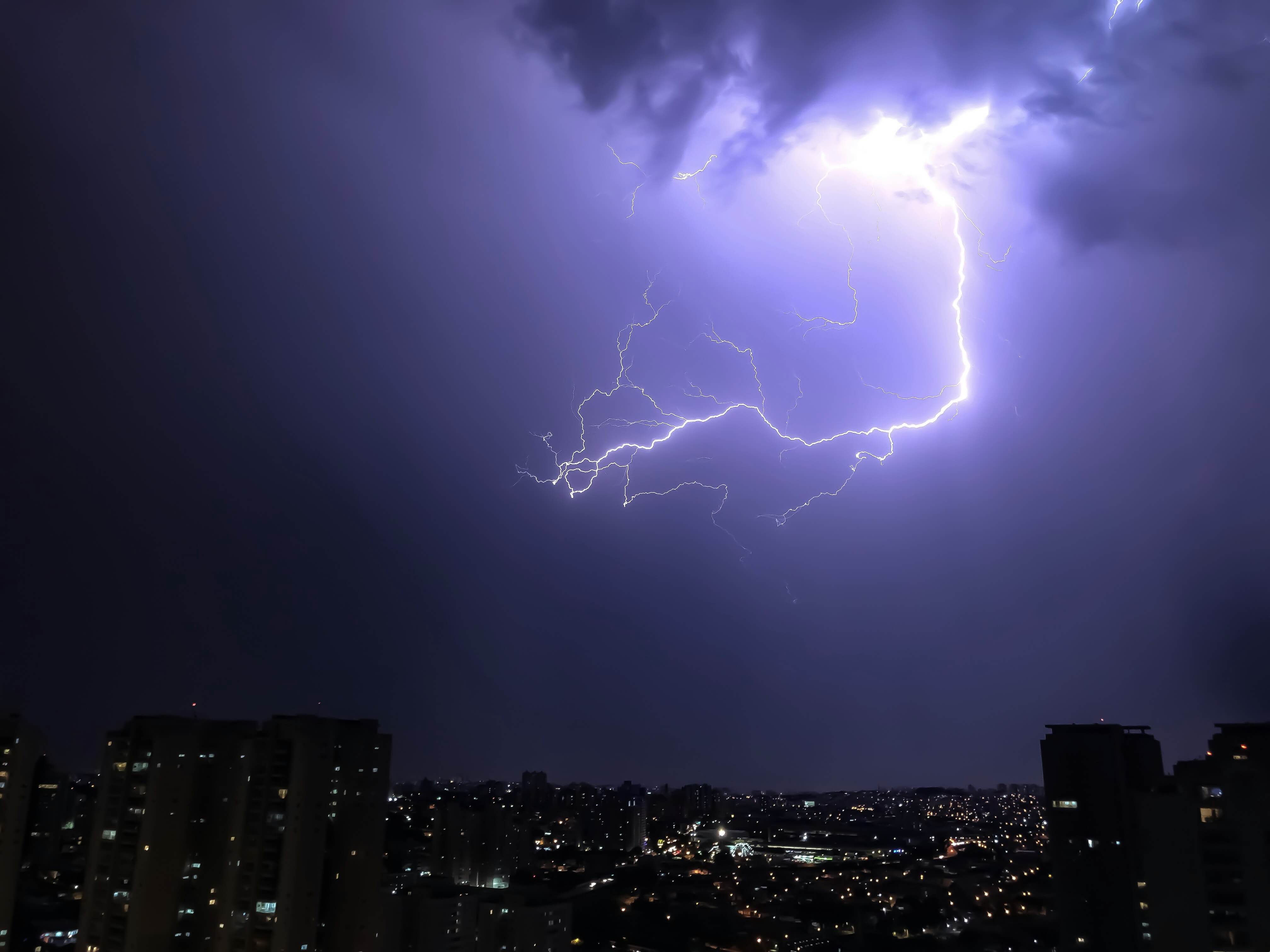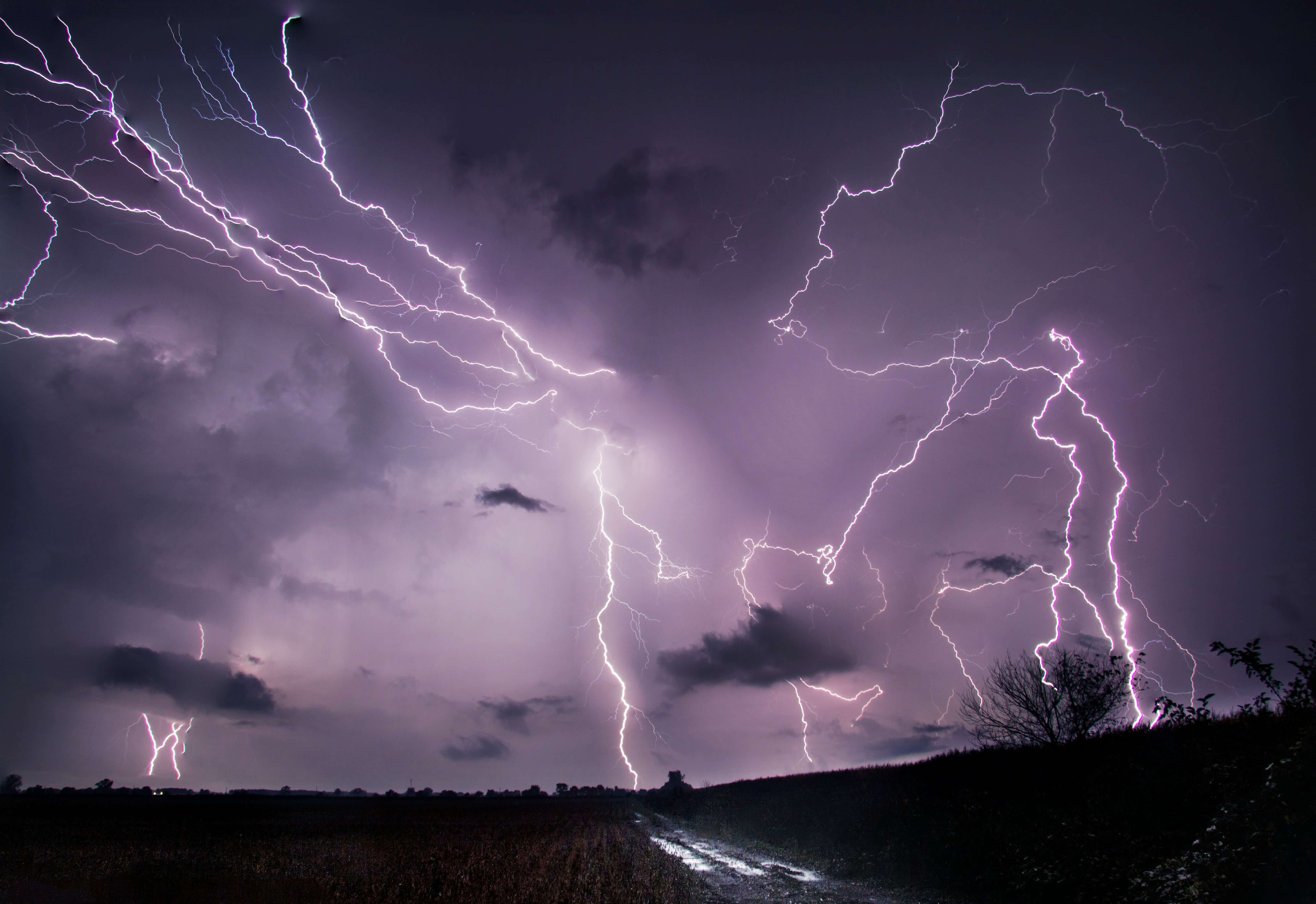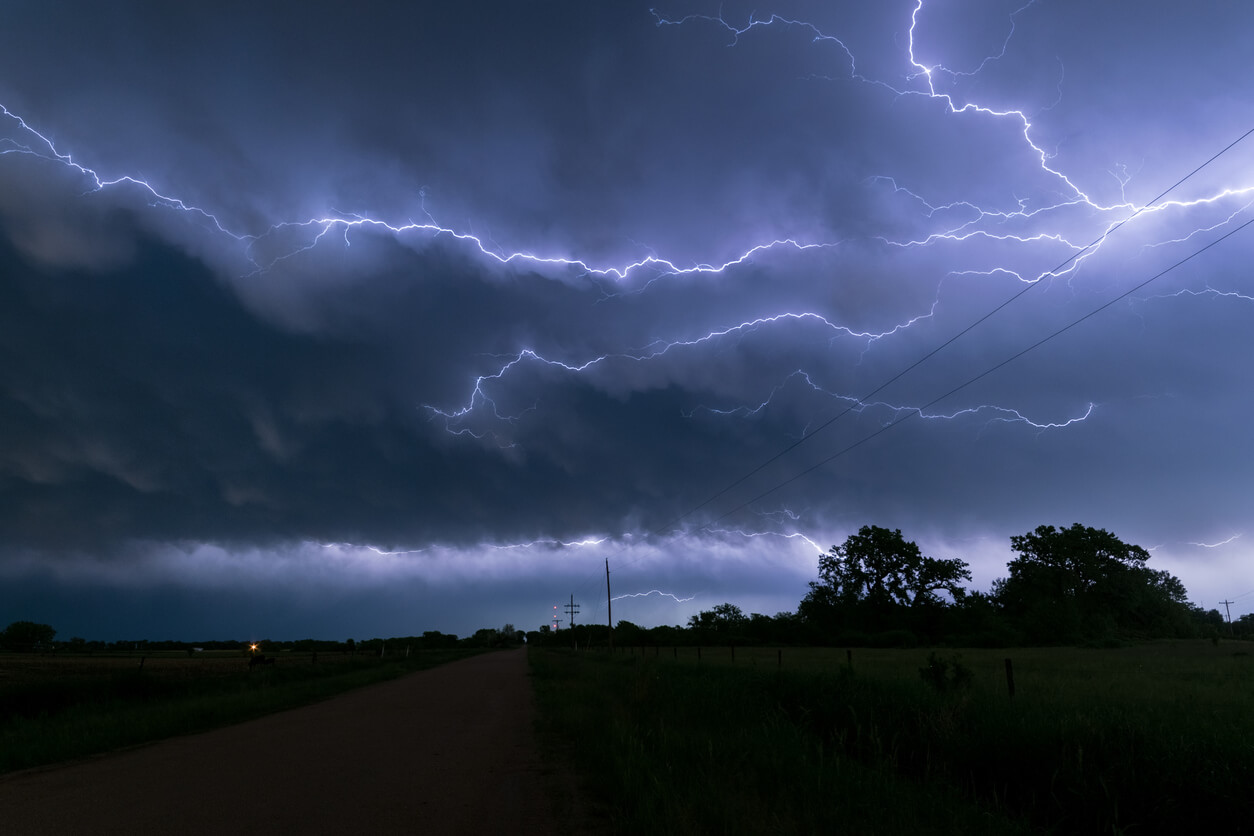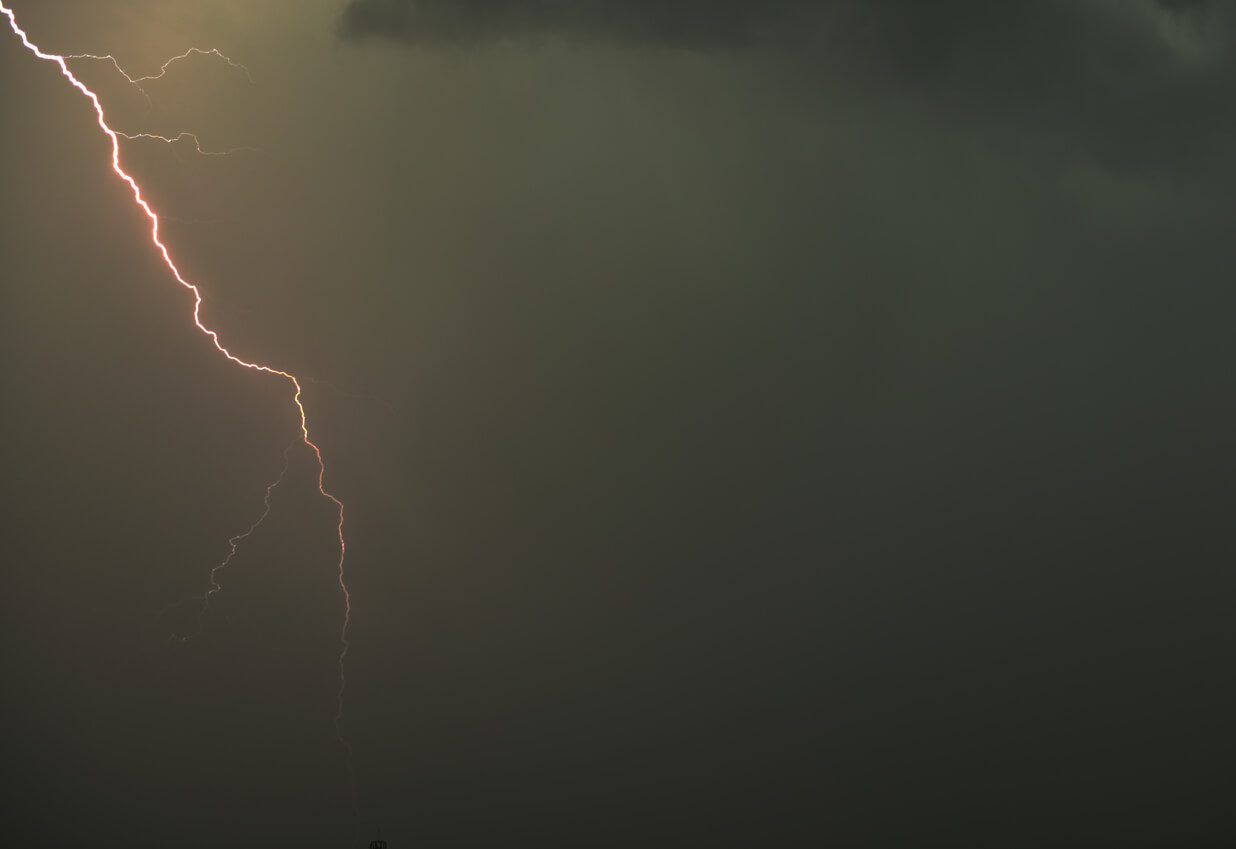Lightning is one of the most amazing weather phenomena that the Earth experiences, and its beauty – and danger – is a sight to behold. However, there are many types of lightning to be aware of in order to stay safe amidst stormy weather.
Knowing the different kinds of lightning can help you better analyze weather patterns and ensure that you and your family stay safe. Tempest is here to help you learn everything you need to know about lightning and weather.
- Where Does Lightning Start From?
- 6 Different Types Of Lightning
- What To Do In A Lightning Storm To Stay Safe
The Tempest Weather System allows you to analyze the weather where it matters most – in your backyard.
Where Does Lightning Start From?
Lightning bolts develop when the electrical positive and negative charges within a thundercloud separate. This separation creates an electric field between the top and bottom of the cloud itself.
How does lightning travel, then? Depending on the charged particles on the bottom of the cloud, storms can either cause lightning to develop from the ground up – called negative lightning – or cause lightning to develop from the cloud to another cloud or the ground itself, called positive lightning.
Positive lightning strikes are rare types of lightning, but they are much more powerful than negative ones.
It’s also important to note that rain and ice often have a direct correlation to the different types of lightning produced in a storm. Most notably, storms that fail to produce larger amounts of rain or ice also tend to fail to produce much lightning. While thunderstorms often don’t produce ice in many regions, this doesn’t mean that creation doesn’t happen within the cloud itself.
6 Types of Lightning to Know
What are the different types of lightning to know? While all lightning may look the same, there are many factors that can help you determine what type of lightning is happening near you. Depending on the lightning cloud, its appearance, surrounding weather, and other atmospheric criteria, some of the most common flashing lightning to be aware of include:
- Intra-Cloud (Sheet Lightning)
- Cloud To Ground
- Cloud To Air
- Cloud To Cloud
- Anvil Lightning
- Heat Lightning
Intra-Cloud (Sheet Lightning)
Sheet lightning, also known as intra-cloud lightning, is the most common type of lightning. It happens entirely inside the cloud itself, meaning that this type doesn’t even strike the ground. It creates a “sheet” of light in the sky, hence its name, and it occurs as the current of electrical charges connects within the thunderstorm cloud, causing it to light up.
Cloud To Ground
There are two types of cloud-to-ground lightning: one that occurs from the cloud to the ground and another from the ground upwards to the cloud itself. Negative cloud-to-ground lightning is much more common, and it often results in the “bend” or “fork” that we’re all familiar with in photos. On the other hand, ground-to-cloud lightning occurs in a single, much more powerful bolt.
Cloud To Air
Cloud-to-air lightning strikes occur when the current within a cloud strikes the charged air around it. While not quite the same as an intracloud lightning strike, this flash lightning won’t reach the ground.
The Tempest Weather System can help keep you and your coworkers safe while on the job.
Cloud To Cloud
Cloud-to-cloud lightning occurs between two or more clouds. This tends to result in a very long bolt between the clouds themselves, sometimes referred to as horizontal lightning. These bolts can travel for hundreds of miles between clouds, but they don’t pose much of a risk to humans, as they don’t reach the ground. This may also result in spider lightning on the underside of the clouds.
Anvil Lightning
Anvil lightning occurs at much slower speeds than other types, resulting in humans being able to see and perceive them in the moment much easier. These bolts occur on the top part of the cloud and then travel down to strike the ground, meaning they potentially can be very dangerous.
Heat Lightning
Lastly, heat lightning occurs far away enough that it cannot be heard. It’s called “heat lightning” due to the fact that it often results in a reddish tint to its strike. It also often occurs in the summer months.
Our Tempest Weather System can help you analyze the lightning around your home as well as other weather, such as wind direction.
What To Do In A Lightning Storm To Stay Safe From Different Kinds Of Lightning
If you notice a storm brewing in the distance or see a storm coming in a weather forecast, it’s important to know how to stay safe from the various types of lightning. Most importantly, avoid open fields and tall objects, which attract lightning bolts much more than other structures or areas. Other ways to stay safe from lightning include:
- Taking shelter in a closed vehicle if other shelter isn’t available
- Avoiding open water and water activities like swimming or surfing
- Avoiding any type of metal, such as fences, tools, etc.
- Using corded technology (while not advised, cell phones are typically considered safer)
- Staying towards the interior of any building and away from windows
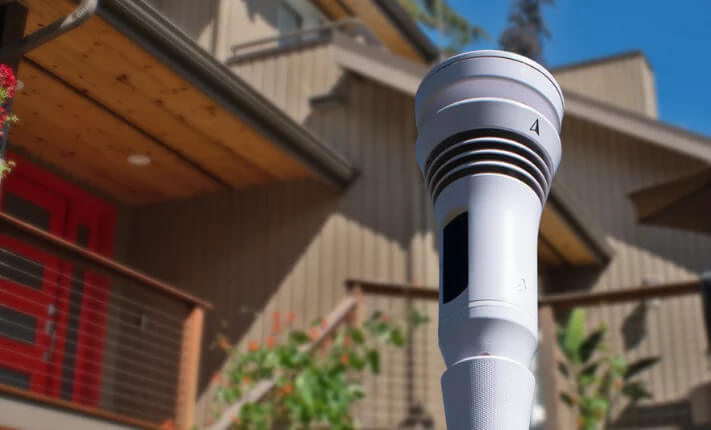
The Tempest Weather System’s Lightning Sensor Can Keep You And Your Family Safe
Knowing the various types of lightning is important to staying safe, but if you’re still unsure of what to look out for, the Tempest Weather System is here to help. Our technology incorporates a lightning sensor that can keep you, your family, your coworkers, and others safe during any storm. You can even integrate our technology into your home’s network to get notifications when lightning could strike soon.
